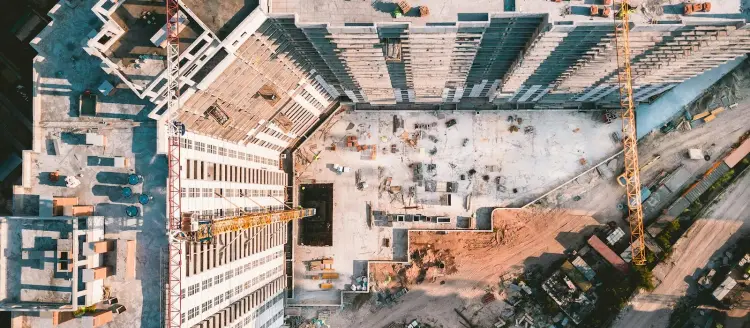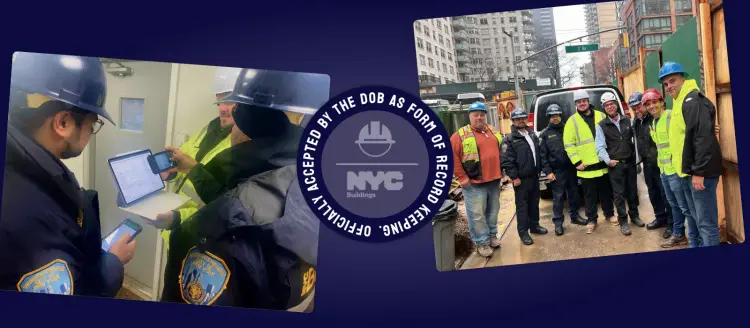Safety Best Practices
Stefano Braganti
Real-Time Workforce Visibility Ends Labor Drift & Rework
Labor drift, rework and schedule slips thrive when you can't see head-count live. Learn how smart turnstiles & dashboards give GCs real-time visibility.

Safety is of utmost importance in the construction industry, and fostering a strong safety culture is crucial to protecting the well-being of workers and ensuring successful project outcomes. As construction projects become increasingly complex and demanding, the need for effective safety management tools and practices becomes evident. In this article, we will explore how construction management platforms and OSHA training can work together to improve safety culture on construction sites. By integrating technology-driven project management solutions with comprehensive safety training, construction companies can create a proactive and safety-focused environment that promotes worker well-being and mitigates risks.
Software solutions that streamline project workflows, facilitate collaboration among team members, and centralize project data. These platforms offer a range of features such as document management, scheduling, budgeting, and communication tools, which contribute to improved project efficiency and productivity. Additionally, they provide real-time visibility into project progress, allowing stakeholders to identify potential safety hazards and take timely corrective actions. By leveraging the power of technology, it enhances communication and coordination among project teams, enabling proactive safety management and reducing the likelihood of incidents.
OSHA (Occupational Safety and Health Administration) training plays a vital role in equipping construction workers with the knowledge and skills necessary to identify and mitigate workplace hazards. By integrating OSHA training programs, companies can ensure that all workers have access to the necessary safety training materials and resources. This integration enables the seamless delivery of safety training modules, allowing workers to complete training courses conveniently within the construction management platform. Moreover, it can track and document employees' training progress, ensuring compliance with OSHA requirements and providing a comprehensive record of safety training across the organization.
Workers are empowered with the necessary information and resources to identify potential hazards and implement safety measures in real-time. The combination of technology-driven project management tools and comprehensive safety training fosters a proactive approach to safety, emphasizing the importance of hazard prevention, effective communication, and continuous improvement. Construction companies can leverage these integrated solutions to establish a robust safety culture, where safety is prioritized at every stage of a project and becomes an integral part of the organization's values and operations.
Effective hazard identification is a crucial aspect of a robust safety culture. Construction management platforms offer tools and features that streamline the process of hazard identification and reporting. By utilizing mobile devices and applications integrated with the platform, workers can easily report hazards or near-miss incidents in real-time. This facilitates prompt action and resolution, as the reported hazards can be immediately communicated to the relevant stakeholders. It also enable the documentation of hazard identification efforts, creating a centralized repository of information that can be accessed and analyzed to identify patterns and trends. This data-driven approach enhances hazard identification and allows for targeted preventive measures to be implemented.
Construction projects involve extensive documentation, including safety plans, permits, inspections, and incident reports. Managing and maintaining these documents manually can be time-consuming and prone to errors. Construction management software provides a centralized repository for safety documentation, enabling easy access, organization, and retrieval of essential safety-related information. This streamlines the documentation process, reduces administrative burden, and ensures compliance with regulatory requirements. Additionally, It can automate compliance checks and notifications, ensuring that safety-related tasks and deadlines are met. By streamlining safety documentation and compliance, it contributes to a more efficient and effective safety management system.
Effective communication and collaboration are essential for fostering a strong safety culture. Construction management platforms offer communication tools, such as project messaging, notifications, and real-time updates, that facilitate information sharing and collaboration among project stakeholders. Safety-related announcements, reminders, and training materials can be easily disseminated through the platform, ensuring that all workers are well-informed about safety initiatives and requirements. Moreover, construction management systems enable real-time collaboration on safety-related tasks, such as conducting safety inspections, implementing corrective actions, and tracking their progress. This promotes teamwork and accountability, as well as enhances transparency and visibility into safety initiatives across the organization.
Platforms equipped with real-time monitoring capabilities enable the collection and analysis of safety-related data. This data-driven approach allows project teams to track and monitor safety performance indicators in real-time, identifying potential issues or trends that require attention. By leveraging advanced analytics and reporting tools, it provides valuable insights into safety performance, enabling proactive decision-making and timely intervention. Real-time monitoring also enhances transparency and accountability, as stakeholders can access up-to-date safety metrics and reports. The ability to analyze and interpret safety data in real-time empowers project teams to make data-driven decisions, implement targeted interventions, and continuously improve safety performance.
The integration of OSHA training with construction management systems fosters a culture of accountability and continuous improvement in safety. By providing a platform for tracking and documenting safety training completion, it ensures that workers receive the necessary training to perform their jobs safely. Moreover, they enable the establishment of safety performance metrics and goals, allowing project teams to monitor progress and hold individuals and teams accountable for their safety responsibilities. They also facilitate the implementation of safety incident reporting and investigation processes, enabling prompt and thorough investigations and the identification of corrective actions. By fostering accountability and continuous improvement, it contributes to a positive safety culture where safety becomes a shared responsibility and a core value of the organization.
From enhancing hazard identification and reporting to streamlining safety documentation and compliance, facilitating communication and collaboration, enabling real-time monitoring and data analysis, and fostering accountability and continuous improvement, construction management platforms play a vital role in creating safer construction environments. By leveraging the capabilities of these platforms and providing comprehensive OSHA training, companies can create a holistic and effective safety management system that not only enhances safety but also boosts productivity, reduces incidents, and protects the well-being of workers. Embracing technology and prioritizing safety go hand in hand, driving positive change and a culture of safety in the construction industry.

Elis Enano is a passionate Co-Owner at a leading eLearning platform focusing on occupational safety and health training. With a deep commitment to creating a safer work environment, Elis leverages her role to deliver high-quality training solutions. As a dedicated mom of two and a pet lover, she brings a compassionate and caring approach to her work.
Safety Best Practices
Stefano Braganti
Labor drift, rework and schedule slips thrive when you can't see head-count live. Learn how smart turnstiles & dashboards give GCs real-time visibility.

Safety Best Practices
Stefano Braganti
Stop-Work Orders crush margins. Digital safety dashboards catch risks early, prevent claims, and protect your 3% fee.

Safety Best Practices
Stefano Braganti
NYC DOB formalizes digital record-keeping: what the bulletin says, why it matters, and how SafetyClerk helped make it happen.

together
SafetyClerk is the construction management platform that makes safety compliance, and risk management of your job site simple and visible in one click.
Stay on
the loop!
ConstructionClerk - 2025 - All rights reserved
ConstructionClerk - 2025 - All rights reserved